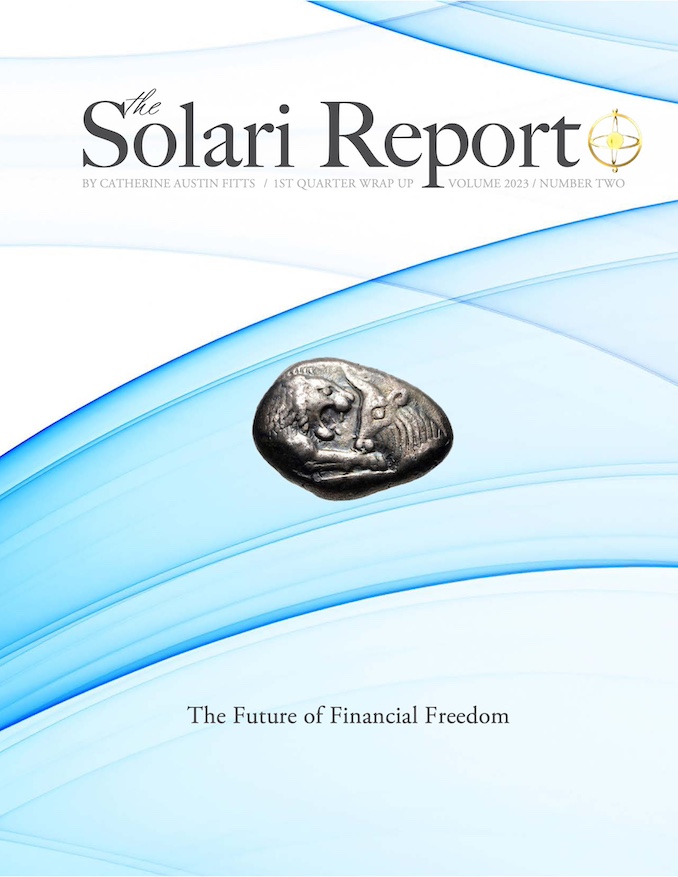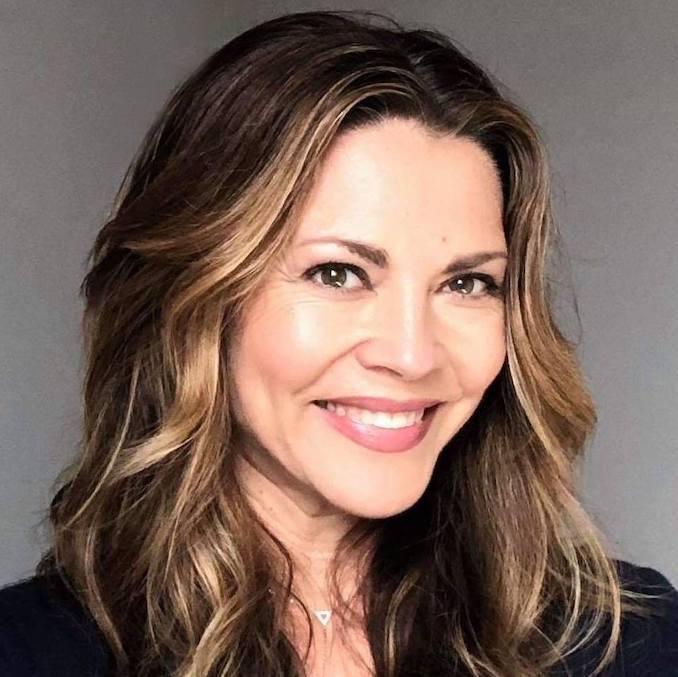“Whoever controls the volume of money in any country is absolute master of all industry and commerce.” -James A. Garfield, 20th President of the United States
PREFACE by Catherine Austin Fitts
The Solari Report is pleased to present the next Special Solari Report in our federal financial series – a summary overview of the legal history and organization of the Federal Reserve by Michele Ferri and Jonathan Lurie.
The NY Fed and its member banks serve as the depository for the US government. If $21 Trillion is missing from US accounts, no doubt some of it went missing through those bank accounts. This makes the push for a Congressional audit of the Federal Reserve particularly timely.
If the US government has systematically refused to obey the laws related to financial management, the Federal Reserve and its banks and their members as depositories or as primary dealers in Treasury securities have continued to effect the transactions that made these illegalities possible. The question is why? Why is the Fed financing transactions that are either outside the law or financing an operation whose finances are outside of the law?
Given that the Federal Reserve banks are private and their specifics of their ownership is secret, the potential conflicts are profound. The proof is in the pudding – the centralization of wealth in America over the last three decades has been very significant. Unfortunately, it correlates with bailouts and trillions in missing money rather than markets and meritocracy. America was just dropped from the top 10 most innovative countries.
To understand, let alone answer, these questions it is essential to know the legal history and organization of the Federal Reserve. If the federal government is operating this far outside the law, it is hard to imagine how the Federal Reserve as its bank and securities dealer could be operating within the law. Enforcing the federal financial laws may require enforcement actions against the Federal Reserve or fundamental reform to the Federal Reserve authorities and structure.
We do not need to change the Constitution – we need to enforce it. However, to enforce the Constitution, we may need to change the fundamental structure of how we govern and manage our money to ensure that it complies with and supports our Constitution.
Ferri and Lurie have done a remarkable job of distilling the information to an accessible form. Here it is.
Related Reading:
You can find the full federal financial series at Enforce the Constitution: Treasury & Fed







https://www.youtube.com/watch?v=aSSW2wBP44o
A time line of events.
@ 09:06 / 15:58
1912-1913
A private association of European and American banks calling themselves “The Federal Reserve” bought the governmental services corporation known as “The United States of America, Inc.” and its “State” franchises as a business venture, and began operating such familiar agencies as The United States Department of Agriculture and The United States Department of Transportation as private, for-profit businesses — without telling anyone.
Dear Catherine
Most of what I know about the Fed comes from G Edward Griffin’s “The Creature from Jekyll Island”
https://www.youtube.com/watch?v=lu_VqX6J93k
and Bill Still’s “Money Masters”
https://www.youtube.com/watch?v=7caStzwpFt8
I have been given a different perspective thought a piece by Martin Armstrong on the Jekyll Island book:
https://www.armstrongeconomics.com/world-news/central-banks/the-creature-from-jekyll-island-unprofessional-book/
and from his article about the Federal Reserve
https://www.armstrongeconomics.com/qa/the-creature-from-jekyll-island/
Here are some highlights from Armstrong’s articles. His basic premise is, “ the Fed is not evil, but rather it is the manipulation of the Fed by politicians.
The amount of propaganda against the Federal Reserve is incredible. What we must keep in mind is that its original design, which lasted for about one year, was brilliant. The classic banking model, borrowing from depositors on a demand basis and lending long-term making a profit on the spread in interest rates, such as business loans and mortgages. This was Relationship Banking not today’s Transactional Banking model.
This was a brilliant scheme. However, it has been Congress, and not the Fed, who has corrupted that mechanism. The Fed was owned technically by the banks as this was supposed to save the taxpayer money. The banks should contribute to their own bailout fund.
Furthermore, the Fed’s design was also about buying in corporate paper when banks would not lend money. This was a mechanism used to offset rising unemployment if corporations could not fund their operations. They supplemented this by the management of regional interest rates to balance the domestic economy.
Each branch of the Fed could raise or lower their local interest rate autonomously to attract capital when there was a local shortage or deflect capital when there was too much. This would often take place with the crop cycle, as money would flow in to pay the farmers upon delivery. Regional capital flows became the Texas-New York arbitrage for when Texas was booming New York was in recession and vice versa. This was the original design and purpose behind the Fed. The Jekyll Island meeting was held in secret ONLY because there was a very strong resentment against anyone with wealth as Marxism dominated the Progressive Movement of the era. There was no such cabal to create some evil entity.
Congress began to manipulate the Federal Reserve for their own self-interest when World War I broke out on April 6, 1917. The alteration to the design of the Fed was to direct it to buy government bonds, not corporate.
That book is highly dangerous for it completely misrepresents and fails to understand that elastic money began in the 1850s and was created privately by clearing houses. It worked perfectly fine and it was not economically disastrous but beneficial.
The ability to create money by the Federal Reserve is essential. However, that design was directly beneficial for it would buy ONLY short-term corporate paper in a crisis when banks could not lend. Buying in corporate paper saved jobs. The key was a simple fact it was corporate and NOT the government. Corporates have to pay back – the government does not.
It was not that the Fed was evil, it was that the Fed was usurped by Congress during World War I and directed to buy only the paper of the government. It was that aspect that has altered the role of the central bank and is demonstrated who the ECB in Europe now own 40% of all government debt and they cannot stop without creating a crisis.
The Creature of Jekyll Island advocates what Jackson did, and that will lead to a massive Sovereign debt crisis among the States and undermined the entire economy both domestically as well as internationally. That is by no means the answer. The answer lies in the curtailment of politicians. The banks owned the Fed BECAUSE it was a bailout system that they paid into. It was never intended that taxpayer money would be used to bail out banks. Once the banks became the seller of government debt, they then had a grip on government and with the Fed only buying government debt, the entire system is nothing like the intended design.
With World War I, the American politicians began to alter the Fed. Its original design was brilliant. To stimulate the economy and suppress unemployment, they would buy corporate paper. With World War I, Congress ordered the Fed to support the US debt. They would not return to the original design of the Fed set out in 1913.
Franklin Roosevelt altered the Fed usurping all power to Washington. The branches remained, but they no longer served the purpose of managing the local economy. It was now one-size-fits-all. It would be Congress who appoints the directors and Fed Chairman, while the technical ownership of a rescue fund for bankers is only there in name, not reality. Goldman Sachs switched tactics and installed its people in the Treasury not for banking, but for trading.
Today, the Fed is nothing like its original intended design. This alter was not caused by bankers, but by politicians. Now, it has the authority to take over anything it thinks is too big to fail, which is not limited to banks. It could take over Google, McDonalds, or anything as long as it states it would harm the economy.
We need a central bank, but not one manipulated by government. There should be a simple insurance fund for banks as originally intended without using taxpayers’ money. It should not be restricted to buying government debt. Instead, it should protect jobs by its original focus to buy corporate paper in times of stress. We must look closely at the Fed to see that its manipulation by Congress for political reasons. It was supposed to support government bonds during World War II, but it took until 1951 to rescind.”
Similarly, there is an interesting piece by Eric de Carbonnel “ Government (not Wall Street) Financial Innovation Caused 2008 Financial Crisis””
https://www.youtube.com/watch?v=cNXyBIPAJqQ
This has all left me somewhat confused and not knowing what to think or believe.
I take heed from what you wrote in your article “Wall Street’s Corruption, the Austrian School and Who’s ‘Really’ in Charge” namely, “As the centralizers want to use social media and online systems to help centralize transactions and move to digital control of currencies, anticipate lots of “woo-woo” proposals about “new money systems.”
I was just at a wonderful conference in Switzerland and heard some of the most terrifying proposals for “a world without money.” Having the Austrians by my side did me a world of good. I kept trying to explain to the most wonderful people that after you have turned over trillions of dollars of bailout money to one group who has now centralized tremendous ownership and power, to voluntarily swear off money means to decrease your power in a way that increases theirs. Is that a good idea?
We need to look at all these ideas through the prism of economic warfare. An eco-village can be a wonderful idea if the people who participate choose to create it and grow it well. However, that idea in the hands of the wrong people can be a design for labor camps.
So be careful with monetary ideas.”
Your wrote that prophetic article back in 2012, and since then we have seen a plethora of monetary ideas, so it is more essential than ever that we all understand money, and part of that also entails understanding the Federal Reserve.
Trying to get at the truth is a bit like trying to undo the Gordian knot, so thank you for this piece which (to mix metaphors) has helped add a few missing pieces to the puzzle.
Best regards,
You are most welcome!